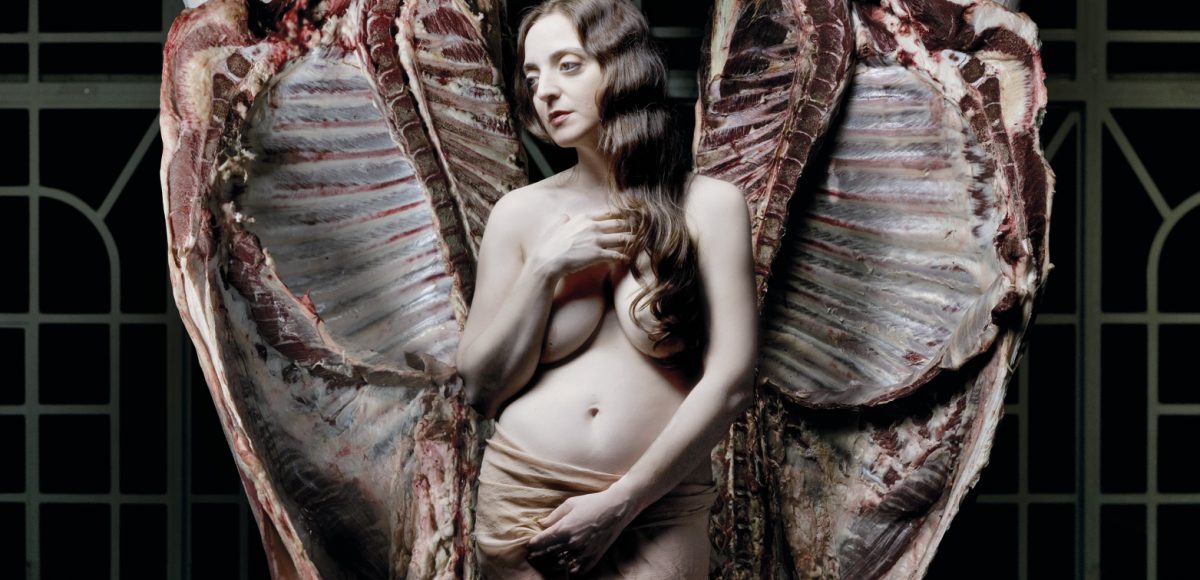To declare that the Getty’s Photography in Argentina exhibition is entrancing would be to slight it. Mastering the curation of Argentina’s vast photographic history, Judith Keller and Idurre Alonso offer numinous and luminous insights into that diverse and layered cultural landscape. This presentation is an encyclopedic pictorial and conceptual survey: from Argentina’s scant indigenous peoples to
its turbulent political history, the display culminates in effervescent contemporary iconography via an
epic journey.
The exhibit includes photographers from other countries who shot in Argentina and Argentine photographers who shot in other countries, resulting in a massive, wild and worldly showcase. From glamour shots of legendary Eva Peron to photographs of the mothers protesting the disappearance of their children executed by a caustic fascist government, there is much to ponder and peruse. Part of Pacific Standard Time: LA/LA at the Getty Center, the exhibition features almost 300 works by 60 artists in four thematic sections that the curators have titled Civilization and Barbarism, National Myths, Aesthetic and Political Gestures and New Democracy to Present Day.
An early chronicle in sepias and ancient emulsion-based printing processes presents the historic peoples who settled the land. This kaleidoscopic vision slides back and forth across a 160-year photographic slipstream. It temporally, metaphorically and symbolically imprints a bold Argentine ethos on our psyches as it swirls alternating images of colorful metafictions and harsh black and white realties. Documental, ethnographic, landscape, conceptual, cinematic, whimsical; it’s all here.
Modern Argentina is portrayed with numerous subcultures representing both city and country peoples. An immense photographic array, this curation is filled with gaucho cowboys wrangling herds of cattle for the abattoir, images of fascist dictatorship, portraits of a fecund people and the land within. All are rounded up and presented in resplendent, cacophonous diversity. This bounty of images, times and cultures simultaneously informs and overwhelms. Yes, there is discord, but there is also delight.
There are many portraits of gauchos in the collection, but Gaucho Gil by Marcos López is both the biggest and most dramatic photograph in the show, made cool and campy by its gigantic ornate frame. Like cowboys loitering in North American mythology, Argentine gauchos retain a special place in the heroic mythology of the Southern cone country.
There are many haunting images that linger in the mind’s eye. Nicola Costantino’s Winged Nicola, Inspired by Bacon and Inspired by Rembrandt seems the perfect photograph to brand the show. The large-format image is a heart-stopping evocation of the Apollonian smashed up against the grotesque. Thrust into the center of a massive, splayed-out, butchered carcass, a shy winsome woman stands Botticelli-demure on a stool, hair and hand modestly covering her breasts. Her gaze is a languid, sensual aside. Soft muted tones enhance the bashful beauty of the shot. Beef is a national passion of Argentina, as are all things sexy and alluring. The meaty carnality of Costantino’s portrait epitomizes the contrasts of the country and its preoccupations.
An outstanding 332-page hardcover catalog with more than 50 pages of critical essays accompanies the exhibition. The widest-ranging collection of Argentine photography ever displayed in the United States, Photography in Argentina evokes the country’s visual gestalt in bold, striking, imaginative ways.











